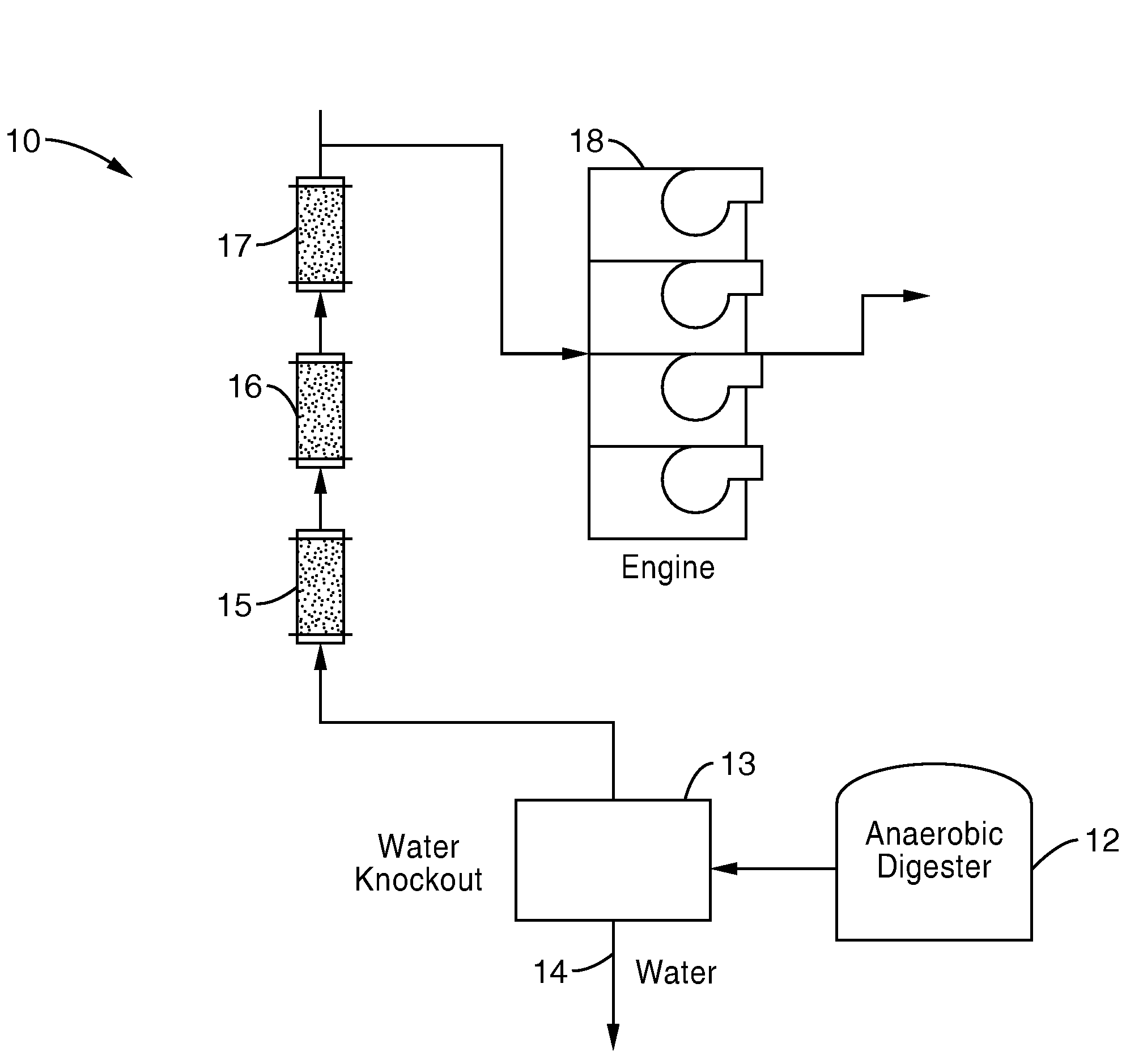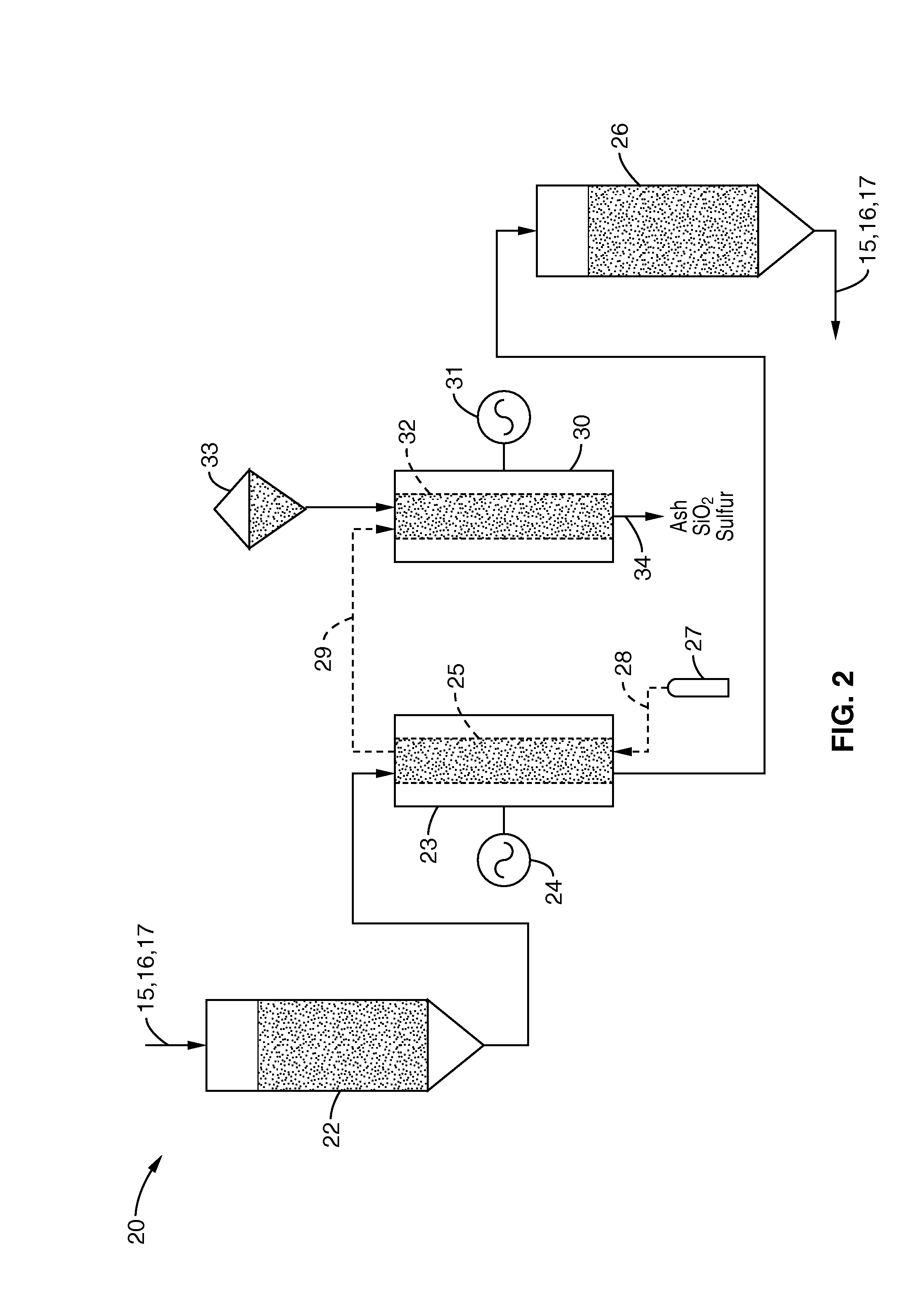Microwave induced destruction of siloxanes and hydrogen sulfide in biogas
a technology of hydrogen sulfide and biogas, which is applied in the direction of physical/chemical process catalysts, chemical processes, separation processes, etc., can solve the problems of siloxane compounds making conventional thermal regeneration difficult, small contaminant stream during microwave regeneration, and siloxane compounds affecting the efficiency of conventional thermal regeneration, etc., to achieve easy change of flow direction, lower backpressure, and high flow rate
- Summary
- Abstract
- Description
- Claims
- Application Information
AI Technical Summary
Benefits of technology
Problems solved by technology
Method used
Image
Examples
Embodiment Construction
[0078]Referring more specifically to the drawings, for illustrative purposes the present invention is embodied in the apparatus generally shown in FIG. 1 through FIG. 5. It will be appreciated that the apparatus may vary as to configuration and as to details of the parts, and that the method may vary as to the specific steps and sequence, without departing from the basic concepts as disclosed herein.
[0079]FIG. 1 is a schematic view of a process 10 for removing siloxane and hydrogen sulfide (H2S) contaminants from biogas. Biogas is primarily methane generated by bacteria in anaerobic conditions such as a digester or landfill 12. Raw biogas flows from the digester to a water knock out 13, such as a chiller system, to remove excess water 14. The biogas then flows to media adsorption vessels 15, 16, and 17 also called adsorbers.
[0080]Media adsorbers 15, 16, 17, contain an absorbent media, such as Granulated Activated Carbon (GAC), and remove H2S and siloxanes from the biogas through a c...
PUM
| Property | Measurement | Unit |
|---|---|---|
| concentrations | aaaaa | aaaaa |
| concentrations | aaaaa | aaaaa |
| concentrations | aaaaa | aaaaa |
Abstract
Description
Claims
Application Information
 Login to View More
Login to View More - R&D
- Intellectual Property
- Life Sciences
- Materials
- Tech Scout
- Unparalleled Data Quality
- Higher Quality Content
- 60% Fewer Hallucinations
Browse by: Latest US Patents, China's latest patents, Technical Efficacy Thesaurus, Application Domain, Technology Topic, Popular Technical Reports.
© 2025 PatSnap. All rights reserved.Legal|Privacy policy|Modern Slavery Act Transparency Statement|Sitemap|About US| Contact US: help@patsnap.com



